I am sure you have heard the expression of “Christmas and Easter” Christians. Well, if you were going to pick a day or two on which you were going to come to church, Christmas and Easter would be good days. If I were not a church-going sort of person, I imagine it might be easier to go to church during the watchful expectation of Advent than what many people think of if/ when they think of Lent. And yet, the defining change from not being a Christian to being a Christian is baptism and Easter. In so many ways, Easter with its preparatory season of Lent is why we celebrate Christ in Advent and Christmas. Christ Jesus comes precisely to give himself away for our flourishing—a whole pattern of life crowned and completed in his death and resurrection—and to invite us into the same flourishing life.
So we begin the Lenten forty days, recalling the time (forty days) spent in the desert after his baptism. It gets only a fleeting mention in the Gospel of Mark, but as we have said, Mark’s Gospel is at blistering break-neck speed, everything only gets a fleeting mention.
Jesus begins his journey to Jerusalem, which in some sense begins his ministry, with his own baptism; likewise, we also begin our Lenten journey with Jesus’ baptism. We recall our own commitment to Christ, which begins in our own baptism. It is through our own baptism, that we are also able to turn away from what would distract us from God.
The Epistle of 1 Peter references Noah’s deliverance from the flood in a comparison with baptism. However, when we think of Noah and the flood, many of us first will think of primary-colored paintings on nursery school walls, and not the sheer terror of the rest of the world and all creation drowning. Be that as it may, we read that the rainbow in the sky as the promise God makes to humanity to never flood the world again. Whether you believe it actually happened or not is actually inconsequential, what is most fascinating in the Noah story is that this particular covenant in the patriarchal history is entirely one sided. God is the only one promising anything here. Sometimes we may think that God asks a lot of us, but really not so much, at least not in this instance.
And then in the Epistle’s comparison, although both stories center on water, Noah and his family are clearly kept out of water and safe from drowning, rather than traveling THROUGH the waters of baptism. But this water of baptism is for us a deeper source of life, rather than a threat to life. However, it is the water from baptism, Jesus’ baptism and ours, which marks the beginning of the indwelling presence of the Spirit.
And yes, water is crucial, but during our annual forty days in the desert of Lent (which is slightly hard to imagine in the PNW) we are urged to discover once again the spring of living water that has been opened for us at our baptism.
We can move closer to the spring of living water. There are ways that make this journey easier, ever more enjoyable. The psalm has some of these listed for us
“Show me your ways, O Lord, *
and teach me your paths.
Lead me in your truth and teach me, *
for you are the God of my salvation;
in you have I trusted all the day long.”
And yes, we will fail, that is part of being human. Still despite all the instruction and road map, just like the covenant with Noah, baptism and God’s grace is free flowing, Christ Jesus came for us with freely, went to the cross freely, and is yet another one-sided gift from God. Through baptism, there is nothing that can separate us from the love of God.
Easter and baptism are inseparably joined. It is at the Easter celebration in which we are invited to share the experience of Jesus’ resurrection, a new birth with the newly baptized. From the same inner spring, now cleared and flowing more abundantly, the life and love of God pour forth into our world.
